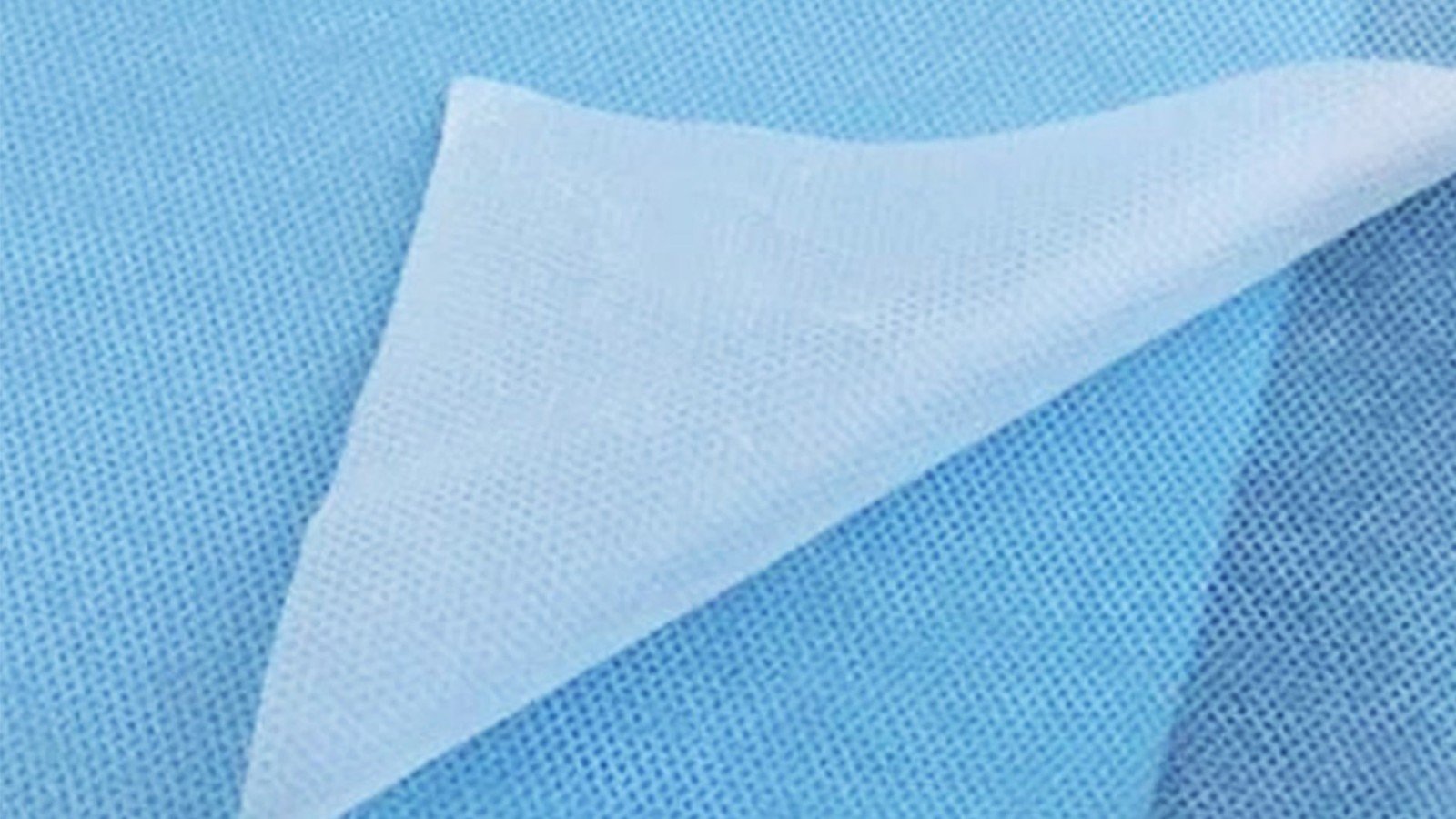Laminated nonwoven fabric is a high-performance material created by bonding nonwoven substrates with functional films (such as PE, PP, TPU, or biodegradable materials) through composite processes. By integrating hot-pressing, extrusion coating, or adhesive technologies, it enhances traditional nonwovens with waterproofing, sealing, and chemical resistance while retaining their lightweight and breathable advantages. This material is widely used in medical, agricultural, industrial packaging, and environmental protection sectors. Below is an in-depth analysis of its core features and applications:
I. Core Processes and Materials
1. Production Techniques
-Thermal Lamination : Bonds films and nonwoven substrates seamlessly under high temperature and pressure, ideal for high-sealing applications (e.g., medical device packaging).
-Extrusion Coating : Applies molten plastic evenly onto nonwoven surfaces to form dense protective layers, improving waterproof and anti-stain properties (e.g., outer layers of protective clothing).
-Adhesive Bonding : Uses eco-friendly adhesives for flexible customization of functional requirements.
2. Material Selection
-Substrates : Common choices include spunbond (SS), SMS composite, or hydroentangled nonwovens, tailored for strength and softness.
-Films :
-PE/PP Films : Cost-effective with excellent waterproofing, widely used in agricultural covers and packaging.
-TPU Films : High elasticity, abrasion, and tear resistance for premium protective gear and outdoor equipment.
-Biodegradable Films : PLA or PBAT materials combined with nonwovens enable full biodegradability, aligning with sustainability trends.
II. Functional Properties and Advantages
1. Multifunctionality
-Waterproofing and Barrier Protection : Film layers block liquids, bacteria, and dust in medical and industrial applications.
-Breathability Preservation : Microporous structures balance sealing and airflow, preventing discomfort (e.g., surgical gowns).
-Enhanced Durability : Tear and abrasion resistance extend product lifespans (e.g., waterproof construction substrates).
2. Eco-Efficiency
-Recyclable or biodegradable designs minimize environmental impact; some products are reusable.
-Replaces traditional plastic-film-textile composites, simplifying processes and reducing costs.
III. Key Application Scenarios
1. Medical and Hygiene
-Medical Protective Gear : PE-laminated nonwovens block blood/body fluids, safeguarding healthcare workers.
-Sterilization Packaging : Breathable laminated materials permit ethylene oxide sterilization while blocking microbes.
-Disposable Bedding/Incontinence Pads : TPU lamination prevents leaks, enhancing patient comfort.
2. Agriculture and Horticulture
-Weed Control Fabric : Black PE-laminated nonwovens suppress weeds, retain soil moisture, and last 3-5 years.
-Greenhouse Insulation : Reflective or transparent films regulate temperature and humidity for crop growth.
3. Industry and Environmental Protection
-Industrial Packaging : Moisture-proof, antistatic laminates protect precision instruments and electronics.
-Geotextiles : High-strength laminated nonwovens isolate roadbeds and line landfill anti-seepage layers.
-Eco-Friendly Bags : Biodegradable PLA-laminated nonwovens replace plastic bags with durability and aesthetics.
4. Consumer Goods
-Furniture Covers : Lightweight laminated fabrics resist dust and water, simplifying maintenance.
-Outdoor Gear : TPU-laminated backpacks and tents balance lightweight design with rugged durability.
IV. Industry Innovations and Trends
1. Technological Advancements
-Nano-Coatings : Add antimicrobial, UV-resistant, or self-cleaning properties for high-end uses (e.g., smart medical dressings).
-Smart Manufacturing : Digital controls ensure precise film thickness and uniformity, boosting product consistency.
Green Transformation
-Fully Biodegradable Laminates : PLA+PBAT films paired with nonwovens degrade naturally within 180 days.
-Circular Economy : Recycling initiatives convert waste into construction materials or fillers.
3. Market Expansion
-Medical Premiumization : An 8%+ annual demand growth in Europe and North America drives high-barrier material R&D.
-Smart Agriculture : IoT-integrated laminated nonwovens monitor soil moisture and adjust coverage automatically.
Conclusion
Laminated nonwoven fabrics bridge the gap between sealing performance, sustainability, and cost efficiency through their "substrate + functional film" design. As biodegradable technologies and smart coatings gain traction, applications will expand from basic protection to high-value sectors, cementing their role in medical, agricultural, and industrial advancements. The future will be shaped by “green lamination” and “intelligent functionalization” , driving global sustainability goals forward.
